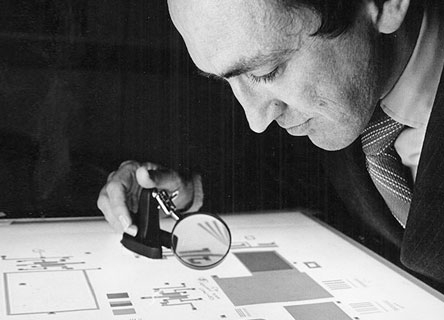The Principle That Propelled the Semiconductor Industry
Robert Dennard, the prolific inventor who revolutionized the semiconductor industry, passed away on May 16, 2024, at the age of 91. His groundbreaking work in the field of dynamic random-access memory (DRAM) transformed computing and laid the foundation for modern electronics. Dennard’s contributions have had a lasting impact on technology, influencing everything from personal computers to smartphones and beyond.
Robert Heath Dennard was born on September 5, 1932, in Terrell, Texas. His early fascination with electronics and engineering led him to pursue a degree in electrical engineering at Southern Methodist University, where he earned his bachelor’s and master’s degrees. He later received his Ph.D. from Carnegie Institute of Technology (now Carnegie Mellon University) in 1958.
The Birth of DRAM
In 1967, while working at IBM’s T.J. Watson Research Center, Dennard invented the dynamic random-access memory (DRAM). This invention was a pivotal moment in computing history. DRAM is a type of memory that stores each bit of data in a separate capacitor within an integrated circuit. Unlike previous memory technologies, DRAM required less physical space and power, enabling the creation of smaller, more efficient, and more powerful computers.
How DRAM Works

DRAM’s operation is based on the principle of storing data in capacitors. Each bit of information is stored in a tiny capacitor, which can be in one of two states: charged or discharged, representing the binary 1 or 0. Because capacitors tend to lose their charge over time, DRAM requires periodic refreshing to maintain the stored data. This refreshing process, though demanding, is offset by DRAM’s high density and speed, making it the preferred choice for main memory in computers.
Impact on the Semiconductor Industry
Dennard’s invention of DRAM had a profound impact on the semiconductor industry. Before DRAM, computers relied on magnetic core memory, which was bulky and power-hungry. DRAM’s compact size and efficiency enabled the production of smaller and more affordable computers, accelerating the personal computer revolution of the late 20th century.
Scaling Laws and Dennard Scaling
In 1974, Dennard, along with his colleagues, proposed what became known as Dennard Scaling. This set of guidelines suggested that as transistors get smaller, their power density remains constant, allowing for faster and more efficient chips. Dennard Scaling has been a key driver of Moore’s Law, which predicts the doubling of transistors on a chip approximately every two years. This principle guided the semiconductor industry for decades, leading to the exponential growth in computing power and the miniaturization of electronic devices.
Awards and Recognitions
Throughout his illustrious career, Robert Dennard received numerous awards and honors for his contributions to technology and engineering. Some of the most notable recognitions include:
- National Medal of Technology and Innovation (1988): Awarded by the President of the United States for Dennard’s outstanding contributions to technology.
- IEEE Medal of Honor (2009): The highest honor bestowed by the Institute of Electrical and Electronics Engineers, recognizing Dennard’s seminal contributions to microelectronics.
- Kyoto Prize (2013): An international award honoring individuals who have made significant contributions to the scientific, cultural, and spiritual betterment of humankind.
Legacy and Influence
Robert Dennard’s legacy extends far beyond his inventions. His work laid the groundwork for many of the advancements in modern computing. The principles of DRAM and Dennard Scaling continue to influence the design and manufacturing of semiconductors today.
Mentorship and Inspiration
Dennard was also known for his mentorship and encouragement of young engineers and researchers. His ability to inspire the next generation of technologists ensured that his pioneering spirit lived on through those he taught and mentored. Many of his protégés have gone on to make significant contributions to the field of electronics and computing.
Continued Relevance in Modern Technology
Even as technology has advanced, the fundamental concepts behind DRAM and Dennard Scaling remain relevant. DRAM is still a critical component in modern computing devices, from laptops and desktops to servers and smartphones. The principles of scaling continue to challenge engineers as they push the boundaries of what’s possible in semiconductor technology.
Challenges and Future Directions
The semiconductor industry faces new challenges as it approaches the physical limits of miniaturization. However, the spirit of innovation that Dennard embodied continues to drive research and development in areas such as quantum computing, neuromorphic engineering, and advanced materials science. These fields promise to extend the capabilities of computing far beyond what Dennard could have imagined.
Robert Dennard’s contributions to the field of electronics and computing are immeasurable. His invention of DRAM and the principles of Dennard Scaling have shaped the technological landscape, making possible the powerful and compact devices we rely on today. As we remember his life and work, we are reminded of the profound impact that one individual can have on the world. Dennard’s legacy will continue to inspire and guide future generations of engineers and scientists.

